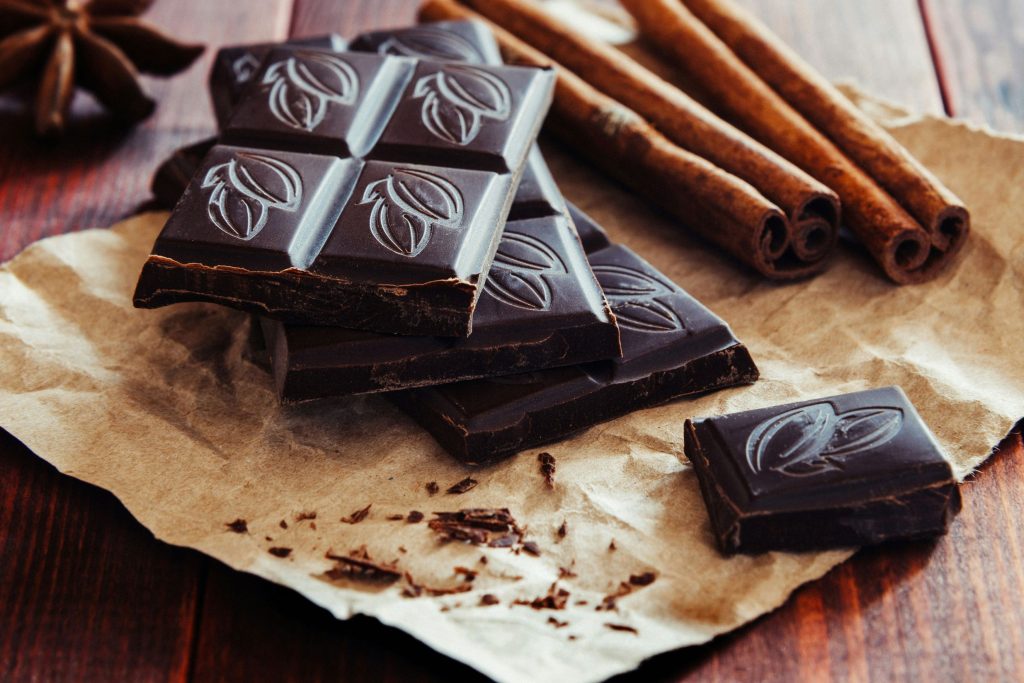Milk chocolate remains the type of chocolate Americans turn to most often, but the more intensely-flavored dark chocolate is gaining ground. While some peoples’ palates prefer more bitter and less sweet flavors, a big factor in its recent popularity is the health halo anointed to dark chocolate.
So is itactually healthy? While it may be more beneficial than milk and white chocolate, and it could be a better option than many other desserts or snacks, it’s still a treat.
There’s no doubt that the cocoa beans used to make this chocolate are worthy of high praise. Cocoa beans are rich in flavanols, which are bioactive compounds found naturally in tea, red wine and berries.
Flavanols have been extensively studied for many years, and the evidence has been impressive. Research shows that flavanols help increase the body’s production of nitric oxide, a compound that dilates our arteries to help blood flow more efficiently through the body, including the brain. This may explain the link between consuming flavanols and improved mood and cognition.
While cocoa beans are rich in flavanols, most chocolate is not – even dark chocolate. Flavanols are highly vulnerable to destruction from the moment the beans are harvested, and most notably when they’re processed to make chocolate.
 Dark Chocolate vs. Milk Chocolate
Dark Chocolate vs. Milk Chocolate
Compared to milk chocolate, it contains a higher concentration of cacao, the ingredients derived from the cocoa bean. Typically, it is between 55% and 90% cacao and milk chocolate is between 10% and 50% cacao. White chocolate, which some would argue is not really chocolate, is made with cocoa butter, but no cocoa solids and no flavanols.
So when you eat dark chocolate you have the potential to consume more flavanols – and generally the higher the percent cacao the more flavanols. However, this can vary dramatically by brand, and it’s not always a guarantee of higher flavanols.
With its more bitter taste, dark chocolate is lower in sugar compared to milk chocolate. Dark chocolate contains 24 grams of sugar per 100-gram dark chocolate bar versus 55 grams in milk chocolate. Dark chocolate also contains more caffeine, with about 80 milligrams of caffeine versus 20 milligrams in milk chocolate. However, that’s not an excessive amount – it’s more than a can of cola but less than a grande latte at Starbucks.
Dark chocolate is less creamy with a bolder bite, and one small study found that participants who ate dark chocolate instead of milk chocolate felt more satiated, less hungry and expressed a lower desire to eat something sweet. In fact, after eating dark chocolate, participants even consumed fewer calories the rest of the day compared to eating milk chocolate.
 Health Benefits of Dark Chocolate
Health Benefits of Dark Chocolate
A few older studies examined the benefits of eating chocolate. For instance, a meta-analysis suggests moderate chocolate consumption (one to six servings per week) is associated with a reduced risk of cardiovascular disease, stroke and diabetes. Although the authors say additional studies are needed to confirm the observed benefits.
Similarly, a more recent systematic review and meta-analysis concluded that eating chocolate more than once a week was associated with an 8% reduction of coronary artery disease.
Other observational studies suggest a link between high cocoa or chocolate intake of 6 grams daily (one to two small squares) and a reduced risk of heart disease and mortality, possibly in part by reducing blood pressure and inflammation.









